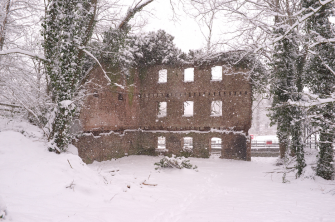Tutsham Mill
The first evidence of a mill at West Farleigh comes from Domesday Book. It is possible that it was on the same site as now, where the Ewell stream enters the Medway. During the 13th century it was owned jointly by a local landowner, James, son of Gilbert de Tutesham, and Leeds Priory.
The mill then disappears from the historical record until the famous engineer, John Rennie, working for Teston’s Charles Middleton, the first Lord Barham, was the project engineer who extended the then existing mill. Charles had obtained the Barham title after being called from retirement by William Pitt to be the First Sea Lord at a critical time in the Napoleonic Wars. He was Nelson’s boss in 1805 when there was a small naval battle at a place called Trafalgar. Despite the reputations of both Rennie and Middleton they encountered much resistance in extending the mill from the Medway Navigation Company, which had controlled the Medway since it was made navigable in the mid-18th century.
The mill changed hands frequently after Middleton’s death until it reverted back to Barham Court and was extended again in 1880 by Roger Leigh, using the very latest machinery. This was the subject of articles in The Engineer and across the Atlantic in Scientific American. However, it was not a commercial success even before it burnt down in 1885.
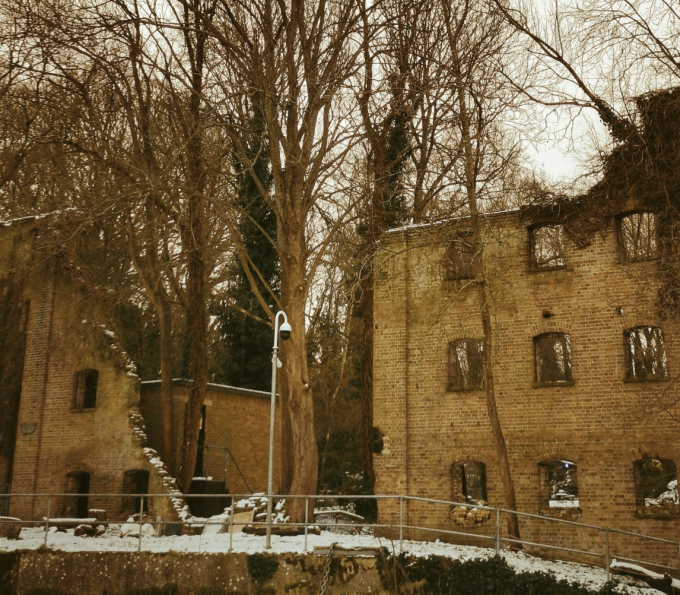
Perhaps, you have heard rumours of its mysterious underground tunnels, verified recently by Kent Archaeological Society’s underground
Group.
As you can see from the photos they are now silted up.
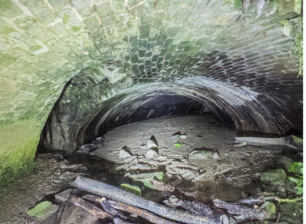
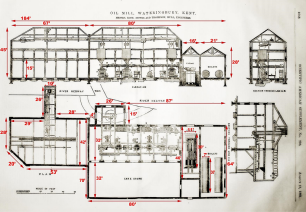
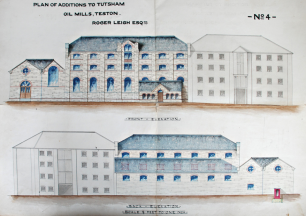
In its heyday the mill’s sheer scale would have dominated the scene, and have generated considerable activity on the river with barges arriving and leaving. The noise of its machinery would have been intrusive, 24 hours a day at some times. When it burnt down the noise of 100 tonnes of oil exploding must have been terrific, and local villagers assembled in large numbers “to witness the grand and exciting spectacle”
The remains of the building falling into disrepair and falling down has left an intriguing ruin, which has attracted visitors since its demise. What we see now is just a small part of the original mill
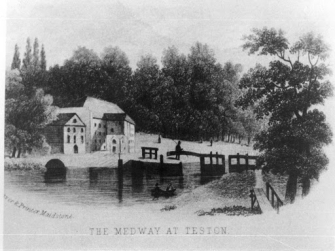
Like at least 18 other mills in Kent, Tutsham was a linseed oil mill. It imported linseed, the seed of the flax plant, crushed it and converted it to oil and cake. The oil was used in soaps, candles, paints, lubricants and, after 1870, in margarine. The cake was mainly fed to cattle, particularly in winter, but also used as a fertiliser. The commercial failure of the mill was probably due to its location: competition in Strood, with deep water facilities, could import the raw material in large ships at a lower cost.
View from the garden of Mill Cottage. Formerly the Mill offices.
In 2020 the owners of the Mill kindly allowed an information board to be added on Mill Lane to also give in situ history.
Many thanks to Terry Bird, who originally wrote this article for Tapestry, Teston’s Village New letter and has written a booklet with greater detail. He also supplied the photos except the one of the mill from the lock, taken by Ed Boyd.
